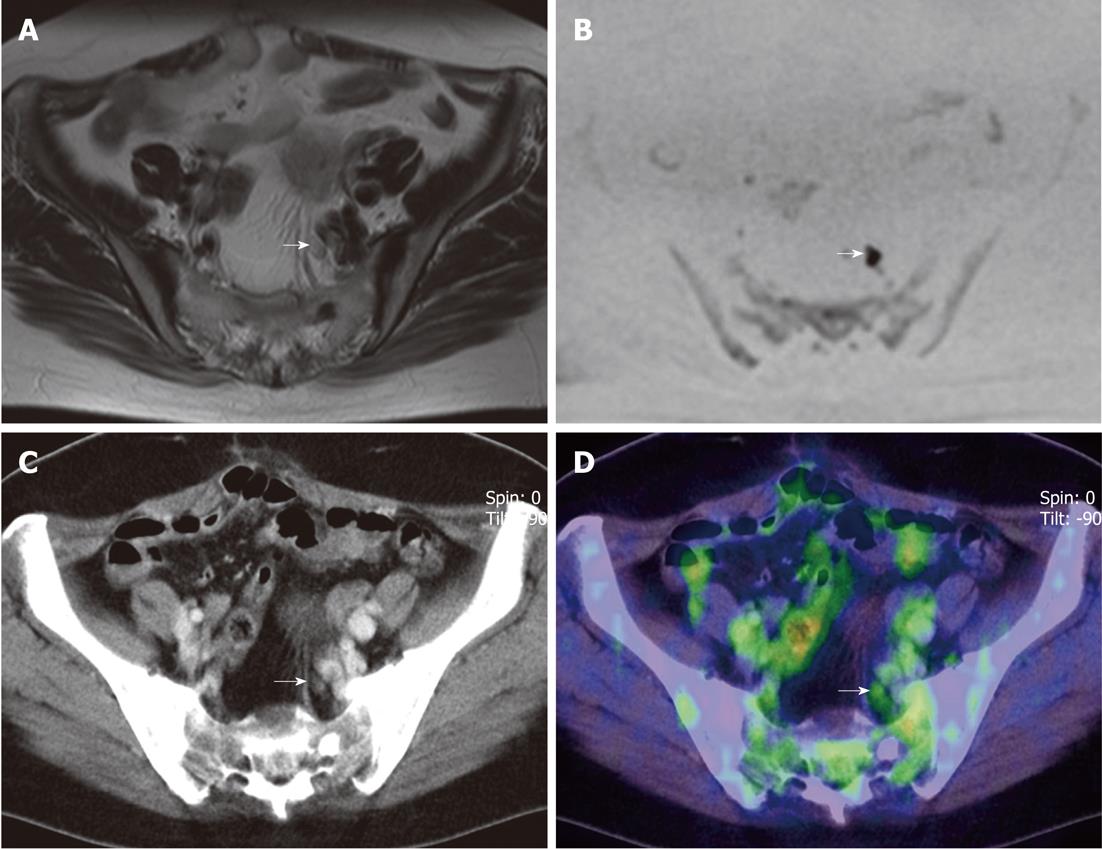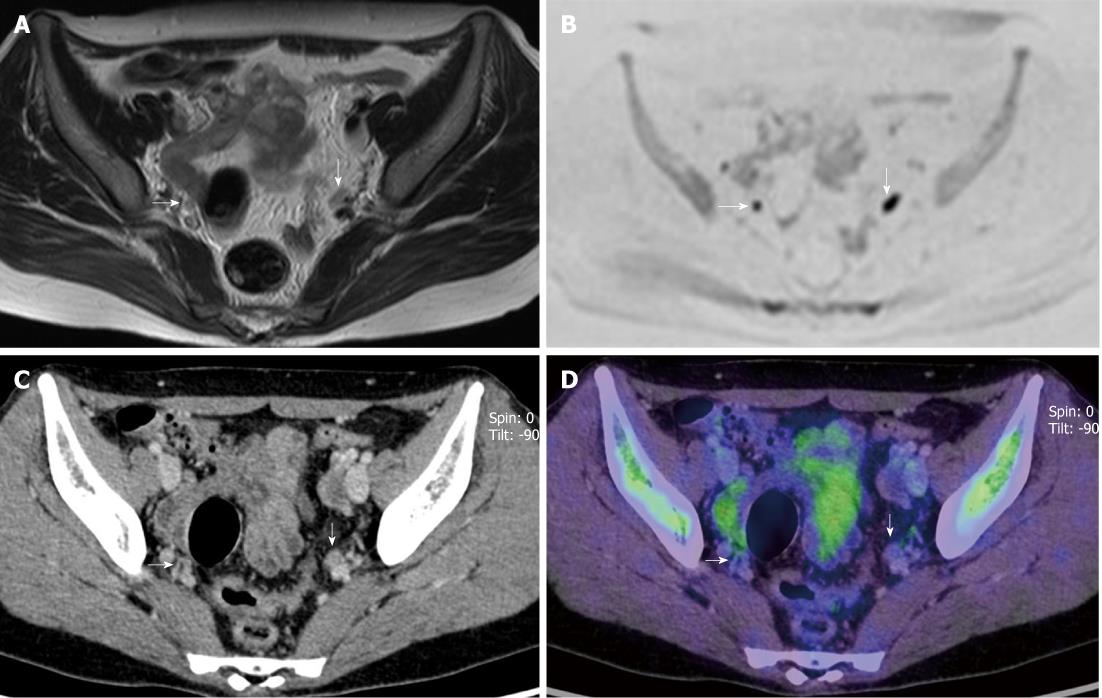Copyright
©2012 Baishideng Publishing Group Co.
World J Radiol. May 28, 2012; 4(5): 207-214
Published online May 28, 2012. doi: 10.4329/wjr.v4.i5.207
Published online May 28, 2012. doi: 10.4329/wjr.v4.i5.207
Figure 1 A 61-year-old woman with endometrial cancer with lymph node metastases in left internal iliac area.
A: T2-weighted magnetic resonance imaging shows a small lymph node (LN) in left internal iliac area (arrow); B: The LN seen in (A) shows moderately abnormal signal intensity on diffusion-weighted imaging (DWI) (arrow) suggesting presence of nodal cancer spread; C: Enhanced CT component of positron emission tomography and computed tomography (PET/CT) shows a small LN in left internal iliac area (arrow); D: PET/CT shows that abnormal 18F-fluorodeoxyglucose uptake corresponds to the LN seen in (C) (arrow), suggesting the presence of nodal cancer spread. Histopathological specimen findings confirmed extensive LN involvement by cancer in the node. Both DWI and PET/CT were true-positive for the node.
Figure 2 A 51-year-old woman with cervical cancer with lymph node metastases in left internal iliac area.
A: T2-weighted magnetic resonance imaging shows two small lymph nodes (LNs) in right and left internal iliac areas (arrows); B: These two LNs seen in (A) show moderately abnormal signal intensity on diffusion-weighted imaging (DWI) (arrows), suggesting the presence of nodal cancer spread; C: Enhanced computed tomography (CT) component of positron emission tomography and CT (PET/CT) shows two small LNs in right and left internal iliac areas (arrows); D: PET/CT shows no 18F-fluorodeoxyglucose uptake corresponding to the two LNs seen in (C) (arrows) suggesting the absence of nodal cancer spread. Histopathological specimen findings confirmed extensive LN involvement by cancer in left internal iliac LN and no involvement in right internal iliac LN. DWI was false-positive for the right and true-positive for the left node. PET/CT was true-negative for the right and false-negative for the left node.
- Citation: Kitajima K, Yamasaki E, Kaji Y, Murakami K, Sugimura K. Comparison of DWI and PET/CT in evaluation of lymph node metastasis in uterine cancer. World J Radiol 2012; 4(5): 207-214
- URL: https://www.wjgnet.com/1949-8470/full/v4/i5/207.htm
- DOI: https://dx.doi.org/10.4329/wjr.v4.i5.207










